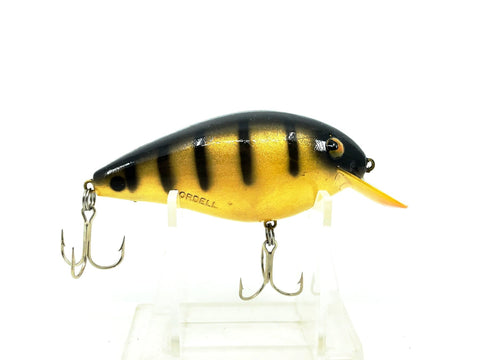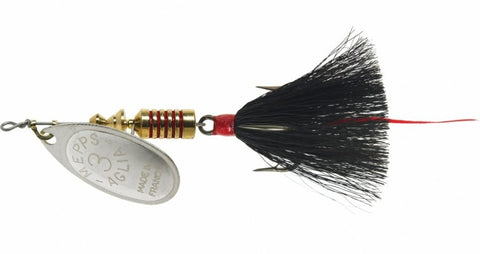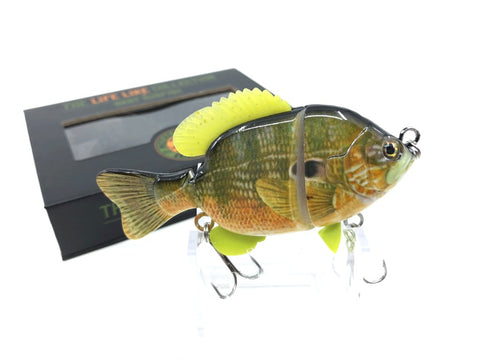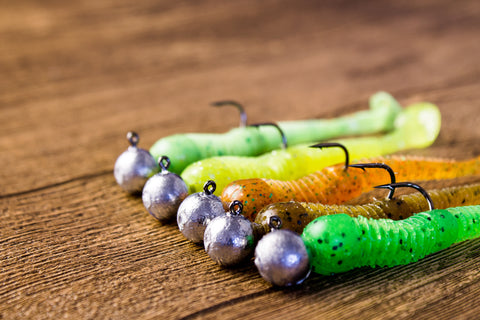Bait & Tackle 101
Bait & Tackle 101
(Fishing 101 Series)

Welcome to My Bait Shop's Bait & Tackle 101 (Fishing 101 Series). Part of our new Fishing Tips section. In this article we will discuss what you need to know about the essential fishing tackle in general freshwater or bass fishing. Learn all about tackle, baits, rigs, and fishing accessories to help prepare you for your first or next fishing adventure.
Fishing is a time-honored pastime enjoyed by millions around the world. Whether you're seeking relaxation, excitement, or the thrill of the catch, fishing offers something for everyone. Bait & Tackle 101 serves as an entry point for beginners, providing essential knowledge and skills to embark on this rewarding outdoor adventure.
Selecting the right gear is crucial for a successful fishing experience. Beginners should start with simple, versatile equipment suited to their target species and fishing environment. A basic spinning or baitcasting rod and reel combo, along with a selection of hooks, weights, and lures, are essential for most fishing scenarios. As anglers gain experience, they can gradually expand their gear collection to meet specific fishing needs.
So where to start? Below we will give you an introduction to Bait & Tackle 101 so that you have an understanding of the different choices you have at your disposal when getting ready for that fishing trip or beginning your journey into this great sport. This is meant only as a beginning and we will branch out in more details in future articles. Note we will not be discussing live bait in this article.
Crankbaits:

Crankbait is a general term used for a fishing lure that is usually a hard-bodied bait. They were originally made of wood but most now are made of resin or hardened plastic. They are usually at least loosely designed in the shape of a minnow or small fish and have a diving bill attached to the front. The length and angle of the bill along with the weight of the lure helps determine the depth the bait will dive when retreived or trolled. With their lifelike swimming action and realistic finishes, crankbaits excel in mimicking the movement of injured or fleeing prey, making them irresistible to predatory fish.
Crankbaits are made to fish anwhere from just below the waters surface all the way down to 30 feet or more making them a very versatile bait. With a crankbait you can quickly cover a lot of water to help determine where fish are setting up.
The design of crankbaits varies widely, with options available for virtually every fishing scenario imaginable. From shallow-running square-bills designed to deflect off cover in shallow water to deep-diving models capable of probing depths of 30 feet or more, there's a crankbait for every situation. Additionally, crankbaits come in a variety of shapes, sizes, and colors, allowing anglers to match the hatch and mimic the prevailing forage in their local waters.
One of the key advantages of crankbaits is their versatility. They can be fished at various depths, speeds, and retrieves, making them effective in a wide range of fishing scenarios. Whether you're targeting bass in shallow weed beds, probing deep structure for walleye, or trolling for saltwater species like tuna and wahoo, crankbaits offer a reliable option for eliciting strikes.
When targeting bass, crankbaits are particularly effective during the spring and fall months when fish are actively feeding and transitioning between shallow and deep water. Shallow-running crankbaits can be worked along rocky shorelines, submerged vegetation, and shallow flats, while deep-diving models are ideal for probing offshore structure like points, humps, and ledges.
Walleye anglers also rely heavily on crankbaits to catch these elusive predators, especially during the summer months when fish are holding in deeper water. Deep-diving crankbaits trolled behind planer boards or downriggers can be highly effective for covering water and locating active walleye schools, while shallow-running models are perfect for targeting fish in shallower areas like river mouths and flats.
One of the most effective techniques for fishing crankbaits is the "stop-and-go" retrieve, which involves periodically pausing the retrieve to allow the lure to suspend momentarily before continuing the retrieve. This mimics the behavior of injured baitfish, often triggering strikes from nearby predators.
Another popular technique is "cranking" or "burning," which involves retrieving the crankbait at a fast pace to cover water quickly and trigger reactionary strikes from aggressive fish. This can be particularly effective when targeting active fish holding in open water or chasing baitfish near the surface.
Crankbaits come in an almost endless variety of designs and colors making them great to fish and collect. Crankbaits mimic the action of baitfish, minnows, crawfish, and bugs. Crankbaits are used primarily for game-fish but almost any fish will hit the right crankbait. (The lure in the photo is a vintage Cordell Big-O Crankbait.)

Jerkbaits get their name from the motion of “jerking” or ripping your rod when fishing the lure. Jerkbaits are a style of hard-baits that either float or suspend on the surface and typically have a long slender profile with either a small lip or none at all.
This allows the bait to slash and dart back and forth throughout your retrieve. This action is sometimes called "walking the dog". This technique involves a series of side-to-side movements with the rod tip to create a zigzagging action on the surface. This can be particularly effective for targeting surface-feeding fish like bass and stripers, especially during low light conditions or when fish are actively chasing baitfish near the surface.
When targeting bass, jerkbaits are particularly effective during the pre-spawn and post-spawn periods when fish are actively feeding in shallow water. By mimicking the erratic behavior of injured baitfish, anglers can trigger aggressive strikes from bass patrolling the shallows in search of an easy meal. Jerkbaits can also be effective during the summer and fall months when bass are keying in on baitfish schools in deeper water. (The lure pictured is a Heddon Zara, one of the most famous Jerkbaits.)

Spinnerbaits are iconic lures in the angling world, cherished for their versatility and effectiveness in targeting a wide range of fish species. Whether you're angling for bass, pike, muskie, or other aggressive game fish, spinnerbaits are go-to choices for many anglers due to their ability to mimic the movement of baitfish and trigger strikes in various water conditions.
At its core, a spinnerbait consists of a metal wire frame adorned with spinning blades and possibly a skirted jighead. This combination creates a lifelike presentation in the water, with the spinning blades producing flash and vibration while the skirted jighead provides a tantalizing profile. The design of spinnerbaits allows for endless customization, with anglers able to mix and match blade styles, colors, and skirt materials to tailor their presentation to prevailing water conditions and fish preferences. Spinnerbaits come in a variety of designs from inline to armed.
One of the key attractions of spinnerbaits is their versatility. Whether you're fishing shallow weed beds, probing deep structure, or working open water, spinnerbaits can be adapted to suit a variety of fishing scenarios. They excel in both stained and clear water, making them reliable options for anglers facing diverse environmental conditions.
Their ability to cover water quickly and effectively makes them invaluable tools for locating active fish. However, successful spinnerbait fishing requires more than just casting and retrieving. Anglers must understand the dynamics of the water they're fishing, including factors such as depth, current, and structure. By analyzing these elements, anglers can determine the most effective presentation for enticing strikes.
One of the key techniques employed when fishing spinnerbaits is the "slow roll." This involves retrieving the spinnerbait at a steady pace just above the bottom, allowing the blades to spin and create vibration while keeping the lure in the strike zone. This method is particularly effective when targeting bass in deeper water or along submerged structure.
Another popular technique is the "bulge retrieve," which involves retrieving the spinnerbait rapidly just below the surface to create a wake. This can be a highly effective tactic for triggering aggressive strikes from bass and other predatory fish, especially during low light conditions or when fish are feeding near the surface.
Spinnerbaits can also be worked through cover such as weed beds, brush piles, and fallen trees using a technique known as "yo-yoing." This involves lifting and dropping the spinnerbait repeatedly as it's retrieved, allowing it to bounce off obstructions and trigger reaction strikes from nearby fish. (The lure in the photo is a #3 Mepps inline spinner with a "dressed" treble. Perhaps one of the most famous spinners.)

Spoon fishing is an age-old technique that has stood the test of time, remaining a favorite among anglers for its simplicity, versatility, and effectiveness in targeting a wide range of freshwater and saltwater game fish. These lures, aptly named for their spoon-like shape, have been used by anglers for centuries to mimic the natural movements of baitfish and trigger strikes from predatory fish species.
The design of spoons is simple yet highly effective. They typically consist of a concave metal or plastic body with a shiny finish, often adorned with reflective patterns or colors to mimic the scales of baitfish. Some of the earliest spoons are made of abalone or mother of pearl. The shape and curvature of the spoon cause it to flutter and wobble as it's retrieved through the water, creating a lifelike action that predators find irresistible.
One of the key advantages of spoons is their versatility. They can be fished in a variety of ways, from casting and retrieving to trolling and jigging, making them effective in a wide range of fishing scenarios. Whether you're targeting bass in shallow weed beds, probing deep holes for trout, or trolling offshore for salmon, spoons offer a reliable option for eliciting strikes.
When targeting bass, spoons are particularly effective during the summer and fall months when fish are actively feeding and keying in on schools of baitfish. Casting spoons along weed edges, rocky shorelines, and submerged structure can yield explosive strikes from aggressive bass, especially when retrieved with a fast, erratic action.
Trout anglers also rely heavily on spoons to catch these prized game fish, especially in rivers and streams where trout are often found holding in fast-moving currents. Casting spoons upstream and allowing them to drift naturally with the current can be highly effective for enticing strikes from wary trout, while jigging spoons in deeper pools and eddies can produce results when fish are holding in deeper water.
One of the most effective techniques for fishing spoons is the "flutter retrieve," which involves casting the spoon out and allowing it to sink to the desired depth before retrieving it with a series of sharp jerks and pauses. This mimics the erratic behavior of injured baitfish, often triggering strikes from nearby predators.
Another popular technique is trolling spoons behind a boat at varying speeds and depths to cover water and locate active fish. This can be particularly effective when targeting offshore species like salmon and tuna, as well as nearshore species like striped bass and bluefish. (The lure pictured is a famous Eppinger Dardevle spoon.)

Topwater fishing is one of the most exhilarating and rewarding techniques in the angler's repertoire. It involves using lures designed to imitate surface-dwelling prey, such as frogs, mice, and injured baitfish, to entice predatory fish species into explosive strikes. Topwater baits come in a variety of shapes, sizes, and designs, each tailored to mimic different types of surface activity and provoke aggressive responses from fish.
The allure of topwater fishing lies in the visual excitement of seeing fish explode on the surface, making it a thrilling and memorable experience for anglers of all skill levels. Whether you're targeting bass, pike, muskie, trout, or saltwater species like redfish and striped bass, topwater baits offer an adrenaline-pumping approach to catching fish.
One of the most iconic topwater baits is the popper, characterized by its cupped face that creates a splashing and chugging action when retrieved. Poppers are particularly effective in calm water conditions, where their surface disturbance can draw aggressive strikes from nearby predators. Anglers can vary the retrieve speed and cadence to adjust the popping action, enticing fish with a combination of sound and motion. Rebel perhaps is most famous for their line of surface poppers.
Another popular topwater bait is the walk-the-dog style lure which we covered above in the jerkbait section. As you can see there is some overlap in these hard-bait sections and even the way you fish some of these lures can fall into multiple categories.
In addition to poppers and walk-the-dog lures, topwater fishing enthusiasts often rely on prop baits, buzzbaits, frogs, and mice to elicit strikes from predatory fish. Each type of bait has its own unique action and presentation, offering anglers a variety of options for targeting fish in different water conditions and scenarios.
When targeting bass, topwater baits are particularly effective during low light conditions, such as early morning and late evening, when fish are more active and feeding near the surface. Bass are opportunistic predators that are drawn to the surface disturbance created by topwater baits, making them vulnerable to well-presented lures.
In rivers and streams, topwater baits can be highly effective for targeting trout, especially in fast-moving currents and riffles where fish are actively feeding on insects and other surface-dwelling prey. By casting upstream and allowing the lure to drift naturally with the current, anglers can entice strikes from wary trout holding in feeding lanes and eddies. This can also be a highly effective strategy on smallmouth bass.
Successful topwater fishing requires more than just casting and retrieving. Anglers must understand how factors like weather, water conditions, and fish behavior influence lure selection and presentation. By experimenting with different types of topwater baits and adjusting their tactics accordingly, anglers can increase their chances of success and enjoy countless memorable moments on the water. (The lure above is a famous Arbogast Jitterbug.)

Frog and rat lures are a subset of topwater lures that have gained immense popularity among anglers in recent years due to their effectiveness in targeting predatory fish species, particularly bass, in heavy cover and shallow water. These lures are designed to mimic the appearance and behavior of real frogs and rats, enticing aggressive strikes from lurking predators hiding amidst vegetation, lily pads, and other submerged structures.
Frog lures typically feature a soft, hollow body made of durable rubber or silicone, resembling the profile of a frog floating on the water's surface. They often come equipped with weedless hooks and realistic detailing, including legs and eyes, to enhance their lifelike appearance. Rat lures, on the other hand, emulate the silhouette and swimming action of a small rodent, making them irresistible to predatory fish prowling the shallows.
One of the key advantages of frog and rat lures is their ability to access areas that other lures cannot reach. Their weedless design allows anglers to cast them into thick vegetation, overhanging trees, and dense cover without fear of snagging, making them ideal for targeting bass hiding in ambush points. This ability to penetrate heavy cover and present the lure where fish are most likely to strike is what sets frog and rat lures apart from other topwater baits.
Frog and rat lures are most effective when fished in areas with abundant aquatic vegetation, such as lily pads, grass mats, and hydrilla beds. These habitats provide ideal ambush points for bass and other predatory fish, allowing them to conceal themselves while waiting for unsuspecting prey to venture too close. By casting frog and rat lures into these areas and retrieving them with a slow, twitching motion, anglers can elicit explosive strikes from lurking bass.
Successful frog and rat fishing require a strategic approach and an understanding of fish behavior. Anglers must carefully select their targets, focusing on areas with the most promising cover and structure. By observing the water for signs of activity, such as swirling or splashing, anglers can identify potential feeding areas and target them with well-placed casts.
When targeting bass with frog and rat lures, it's essential to vary the retrieve speed and cadence to mimic the natural movements of prey. A slow, steady retrieve can be effective in calm water conditions, while a faster, more erratic retrieve may be necessary to trigger strikes in choppy or windy conditions. Anglers can experiment with different techniques, such as the "walk-the-dog" or "pop-and-stop," to determine what works best in a given situation.
It's also important to remember to pause or wait a moment on hook sets when fishing these lures. Many a fish has been lost by setting the hook too soon by an overeager fisherman while watching a bass explode on a bait. (The lures pictured above are topwater Frog baits).

Swimbaits have revolutionized the way anglers approach fishing for predatory species, offering a lifelike presentation that can entice even the most wary of fish. These lures imitate the appearance and swimming action of baitfish, making them highly effective in a variety of fishing scenarios, from freshwater lakes and rivers to saltwater flats and coastal waters.
Swimbaits come in a range of sizes, styles, and designs, allowing anglers to match the hatch and target specific fish species. Whether you're chasing trophy bass, pike, muskie, trout, or saltwater predators like striped bass and tarpon, there's a swimbait suited to the task at hand.
One of the key advantages of swimbaits is their versatility. They can be fished in a variety of ways, from a slow, steady retrieve to a fast, erratic action, making them effective in both shallow and deep water. Whether you're fishing along rocky shorelines, submerged structure, or open water, swimbaits offer a reliable option for enticing strikes from predatory fish.
The design of swimbaits varies depending on the target species and fishing conditions. Soft plastic swimbaits are popular among bass anglers, as they offer a natural feel and lifelike action that can trigger strikes even in tough fishing conditions. Hard-bodied swimbaits, on the other hand, are favored by anglers targeting larger species like pike, muskie, and saltwater predators, as they are more durable and can withstand the rigors of aggressive strikes and toothy predators.
When targeting bass, swimbaits are particularly effective during the spring and fall months when fish are actively feeding and keying in on schools of baitfish. Whether fishing shallow flats, weed beds, or offshore structure, swimbaits can be retrieved at varying speeds and depths to match the behavior of the fish and trigger strikes.
In addition to bass, swimbaits are also highly effective for targeting other freshwater species, such as pike, muskie, walleye, and trout. Whether cast from shore or trolled behind a boat, swimbaits can elicit strikes from a variety of predatory fish species, making them invaluable tools for anglers seeking trophy-sized fish.
Successful swimbait fishing requires more than just casting and retrieving. Anglers must understand how factors like depth, speed, and lure action influence fish behavior and adjust their tactics accordingly. By experimenting with different types of swimbaits and fishing techniques, anglers can increase their chances of success and enjoy countless memorable moments on the water. (Lure pictured above is a Mother Nature Company swimbait.)

Fishing with jigs is a timeless technique that has remained a staple in anglers' arsenals for generations. Jigs are versatile and effective lures that can be used to target a wide variety of fish species in both freshwater and saltwater environments. From bass and walleye to crappie, trout, and even saltwater species like snapper and grouper, jigs offer anglers a reliable option for enticing strikes in a variety of fishing scenarios.
The design of jigs is simple yet highly effective. They typically consist of a weighted head molded around a sharp hook, often adorned with a skirt or soft plastic trailer to add lifelike action and attraction. Jigs come in a variety of shapes, sizes, and colors, allowing anglers to match the hatch and target specific fish species or fishing conditions.
One of the key advantages of fishing with jigs is their versatility. They can be fished in a variety of ways, from casting and retrieving to vertical jigging and bottom bouncing, making them effective in both shallow and deep water. Whether you're fishing along rocky shorelines, submerged structure, or open water, jigs offer a reliable option for enticing strikes from predatory fish.
When targeting bass, jigs are particularly effective for probing heavy cover and structure where fish are likely to be hiding. Whether flipping jigs into thick vegetation, pitching them under docks, or dragging them along rocky ledges and drop-offs, jigs excel at getting into tight spaces and enticing strikes from wary bass.
In addition to bass, jigs are also highly effective for targeting other freshwater species, such as walleye, crappie, and trout. Whether jigging in deep holes and channels or drifting over submerged brush piles and reefs, jigs can be rigged with a variety of trailers and worked with different techniques to match the behavior of the fish and trigger strikes.
Successful jig fishing requires more than just casting and retrieving. Anglers must understand how factors like depth, speed, and lure action influence fish behavior and adjust their tactics accordingly. By experimenting with different types of jigs, trailers, and fishing techniques, anglers can increase their chances of success and enjoy countless memorable moments on the water.

Softbaits have revolutionized the fishing industry since their introduction a few decades ago. They offer anglers a versatile and highly effective option for targeting a wide variety of fish species in both freshwater and saltwater environments. These lures, made from soft, pliable materials such as silicone or rubber, come in a myriad of shapes, sizes, and colors, allowing anglers to mimic the appearance and behavior of natural prey with unparalleled realism.
One of the key advantages of softbaits is their lifelike action and feel. Unlike traditional hardbaits, which have a rigid structure, softbaits move and behave in the water in a natural, organic manner, making them irresistible to predatory fish. Whether you're fishing for bass, walleye, trout, redfish, or snapper, softbaits offer a reliable option for enticing strikes in a variety of fishing scenarios.
Softbaits come in a variety of styles, each tailored to mimic different types of prey and fishing techniques. Some of the most popular softbaits include worms, grubs, crawfish, minnows, and creature baits, each designed to imitate a specific type of forage and elicit strikes from fish. Additionally, softbaits can be rigged in a variety of ways, including Texas rigs, Carolina rigs, drop shots, and jig heads, allowing anglers to adapt their presentation to match prevailing fishing conditions.
When targeting bass, softbaits are particularly effective for probing heavy cover and structure where fish are likely to be hiding. Whether flipping creature baits into thick vegetation, dragging worms along rocky ledges and drop-offs, or swimming minnow imitations through submerged brush piles, softbaits excel at getting into tight spaces and enticing strikes from wary bass.
In addition to bass, softbaits are also highly effective for targeting other freshwater species, such as walleye, crappie, and trout. Whether fishing in deep holes and channels or drifting over submerged brush piles and reefs, softbaits can be rigged with a variety of rigs and worked with different techniques to match the behavior of the fish and trigger strikes.
Successful softbait fishing requires anglers to understand how factors like depth, speed, and lure action influence fish behavior and adjust their tactics accordingly. By experimenting with different types of softbaits, rigs, and fishing techniques, anglers can increase their chances of success and enjoy countless memorable moments on the water.

Terminal tackle is a vital component of any angler's gear, encompassing the various tools and accessories used to rig and present fishing baits or lures to fish. Understanding the terminology associated with terminal tackle is essential for anglers of all skill levels, as it allows them to effectively communicate, select, and utilize the appropriate gear for their fishing endeavors. Below are key definitions of common terminal tackle components:
Hooks: Hooks are devices typically made of metal, with one end sharpened and pointed to penetrate the fish's mouth, and the other end attached to fishing line or leader. Hooks come in various shapes, sizes, and styles, including J-hooks, circle hooks, treble hooks, and weedless hooks, each designed for specific fishing applications and target species.
Weights/Sinkers: Weights or sinkers are devices used to add mass to fishing rigs, enabling anglers to cast their baits or lures to desired depths and maintain proper presentation. Sinkers come in a variety of shapes, including split shot, egg sinkers, bullet weights, and bank sinkers, each suited for different fishing conditions and techniques.
Swivels: Swivels are small, barrel-shaped devices with rotating ends that prevent fishing line from twisting and tangling during retrieval. They are commonly used to attach leaders, rigs, and terminal tackle to main fishing lines, allowing for smooth and unrestricted movement of baits or lures in the water.
Snap/Snap Swivel: A snap or snap swivel is a variation of a swivel that includes a small spring-loaded clip for quickly attaching and changing lures or baits. Snap swivels are commonly used in situations where anglers want to switch between different lures or baits without retying knots.
Leaders: Leaders are sections of strong fishing line or wire attached between the main fishing line and the terminal tackle. Leaders serve various purposes, including abrasion resistance, bite protection, and preventing fish from seeing the main fishing line. Leaders can be made from materials such as monofilament, fluorocarbon, or wire, depending on the fishing application and target species.
Rigs: Fishing rigs refer to pre-made setups consisting of multiple hooks, sinkers, swivels, and other terminal tackle components arranged in a specific configuration for a particular fishing technique or target species. Common rig types include Carolina rigs, drop shot rigs, and Texas rigs, each designed to optimize bait presentation and increase angler efficiency.
Bobbers/Floats: Bobbers or floats are buoyant devices attached to fishing lines to suspend baits or lures at specific depths and provide visual indication of fish strikes. Bobbers come in various shapes and sizes, including round, oval, and slip floats, each suited for different fishing conditions and presentations.
Split Rings: Split rings are small, circular metal rings with a break in the circumference that allows them to be opened and closed. They are commonly used to attach hooks, lures, and other terminal tackle components to fishing line or leaders securely.
Related Articles:
25 Vintage Fishing Lures Worth A Fortune
20 Vintage Heddon Fishing Lures Worth A Fortune
20 Vintage Creek Fishing Lures Worth A Fortune
Fish Weight Calculator: Our very own Fish Weight Calculator at My Bait Shop.
Musky Fishing 101: Another article from our Fishing 101 Series in our Fishing Tips Library.
Fishing Tips Index: The Index to all of our Fishing Tips articles.

